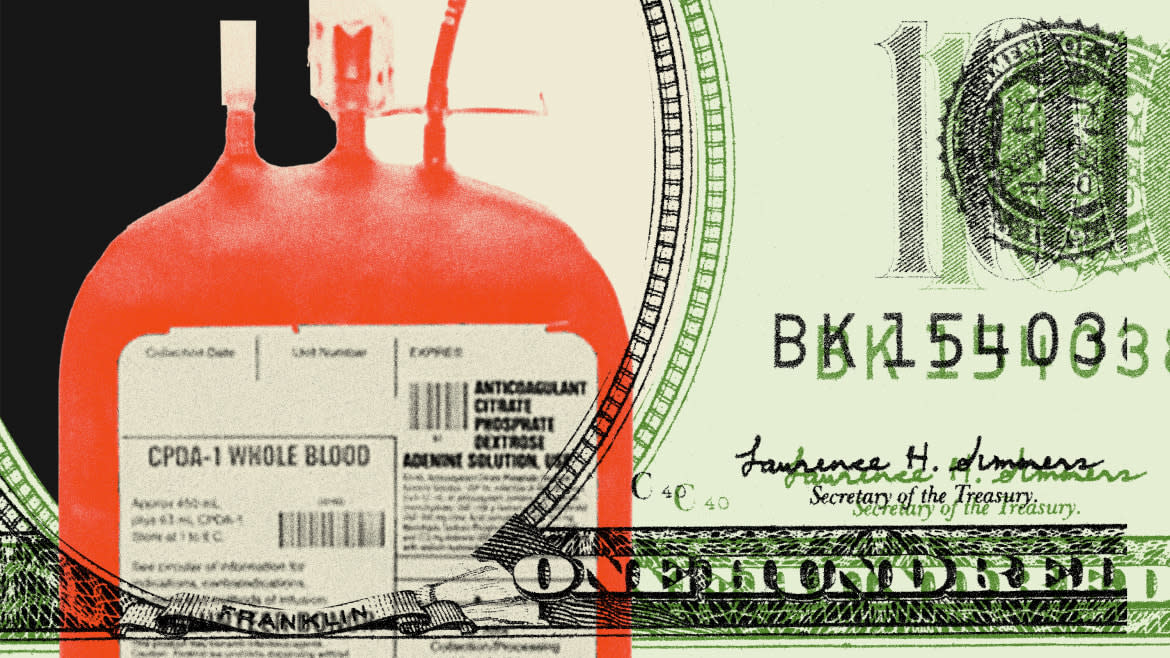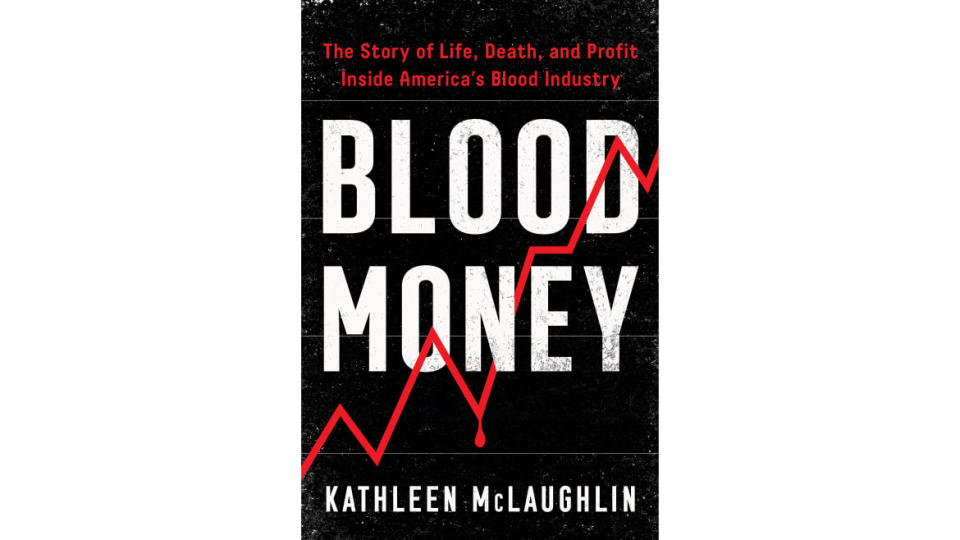This Industry Literally Wants to Suck the Blood of the Poor

You can save lives while earning some money!
—CSL Plasma
In the fifteen or so years that I lived in China, I was fascinated by the dystopian tales of that country’s plasma economy. Even the name seemed too strange for it to have been a reality. It was real, of course. The idea and the result of constructing a moneymaking scheme around the extraction and sale of the blood of poor people, or even of people just living on the economic fringes, seemed right out of a science fiction novel, one that at many turns was hardly believable. Back then, I thought it was a plan so brazenly weird that only China in that era would attempt to pull it off. It seemed to me a gross manifestation of unchecked greed to leech a lifegiving substance from people who need money so it could be sold by some faceless entity to make profits for a higher authority.
I traveled through Henan and nearby provinces extensively in those years, writing stories for newspapers and magazines about the consequences of the scheme, the blood-borne AIDS epidemic, the ongoing deaths and protests, and the heavy-handed cover-ups. That country’s haphazard, rushed attempt to create a massive domestic blood plasma industry, sped along by greed, became instead a model for how not to handle a public health crisis. By placing profits ahead of safety and by cutting corners, China’s plasma system infected hundreds of thousands of Chinese people with HIV, and its true impact remains concealed to this day.
The farmers of Henan sold their blood plasma at a frenzied pace, and when HIV entered the corrupted system, as many as a million people were infected. By the time I met the whistleblowers Wang Shuping and Gao Yaojie in the United States, I had developed a smug conviction that our system here was much better, or at least a little kinder. There’s a mental deception that happens when you live outside your own country for a long time, when you begin to idealize home and see past its faults. I naively never suspected that America’s massive plasma pool, what I now know is a $24 billion-a-year global industry, was born almost entirely of the same idea—taking advantage of people who need money. I thought I would find at least a few people who sold plasma primarily for altruistic reasons. I did not meet one. In the course of investigating the practice and of interviewing more than 100 people who sell or have sold their plasma, I’ve begun to understand the truth about America and why this country, without much notice, has become the home of the real plasma economy. As the rich have grown richer, the non-rich have taken to selling their blood parts in ever-growing numbers.
FDA Warns: Don’t Give These Companies Your ‘Young Blood’
Before she died in 2019, Wang Shuping led me to the doorway of seeing how things here are potentially just as bad as they were back in China, but in different ways. She knew somehow, just from getting a glimpse of the speed at which it was operating, that the American system was as predatory as the one she had exposed back in China. She also knew something was wrong, but she wasn’t able to see yet exactly what that was, and she wanted me to find out more. Today, the plasma industry appears to be safe from viral infections like the kind that wiped out the practice in China, a cautionary tale that’s been absorbed the world over. Wang Shuping didn’t live long enough see the coronavirus spread like a brushfire through China and out into the world, sickening and killing millions of people. In our conversations, it was clear she understood from her own experiences that as long as heavy-handed governments continue to crush information vital to public safety, a terrible crisis could strike again.
Hundreds of plasma extraction centers
It’s not an exact parallel with what is happening to plasma sellers in America; few events pair so closely. And yet, the United States has built a dystopian sector similar to what China dreamed of creating. It consists of a network of hundreds of plasma extraction centers, deliberately built in economically disadvantaged neighborhoods, towns, and cities. Places like Flint, Michigan, and Rexburg, Idaho, and El Paso, Texas. Places where companies know people need money and might do something a little unpleasant to get it. The centers prey on the precarity of people who live in these places, often ignored by the wider public, and a little bit too dark to dive deep under the surface. They use an American mixture of cheery customer service and ever-changing payment schemes that can make plasma sellers feel like they are the ones gaming the system, when reality is the other way around. They draw in more people of color because they are often built in the places where most people aren’t white. It is an industry that takes advantage of baked-in American economic and racial inequities.
The plasma industry has done all of this without too many people in power taking notice, in large part because the practice doesn’t affect the lives of the comfortable among us. Unless you are sick like me, most middle-class and wealthier white people don’t spend a lot of time thinking about the plasma centers they might pass on the road, who the people are who are selling their blood, or where all that blood comes from and goes. Until I dug under the surface, I didn’t know either. It’s easy, almost comforting, to believe it is a practice reserved for only the poorest, or people reliant on drugs or alcohol. In truth, many of the poorest and most downtrodden people are screened out of the system and prohibited from selling their plasma. They never even make it past the questionnaire that demands a permanent home address and basic blood work. America’s wealth gap has grown so wide that teachers, journalists, and many other workers in what were, not so long ago, solidly middle-class professions have fallen into a shaky existence that compels them to sell pieces of their bodies to live more comfortably. Plasma sellers can be found just about everywhere, if you just ask around. The plasma industry knows this, and it relies upon that reality for its giant pool of yellowish liquid.
Even though we have millions of people in America who sell their blood plasma either as a temporary fix or for long-term in- come, we don’t know what that does to their bodies. Absent robust, independent scientific studies, there are endless anecdotes: stories of fainting, of being too weak to work, of feeling like they’re recovering from the flu. Medical science offers almost no data on the long-term effects of donorship but still we have collectively decided it’s fine for people who are broke to sell their blood twice a week for as long as possible. For-profit companies present plasma donation as simply a way to make money and save lives in the process. These plasma sellers do change lives, like mine, but many times their own health is almost certainly affected, at least temporarily. A practice that makes some people faint and feel ill, or need to sleep for hours—done twice a week for years on end—can’t be that innocuous. It deserves more study.
It’s in the corporations’ best interests to keep the science murky: if we knew more about the negative effects, perhaps pharmaceutical companies would have fewer donations to fill the giant pool of plasma. In the years I’ve been digging beneath the surface of plasma selling, I’ve grown more uneasy with each infusion I receive. The stories of plasma sellers and what brought them to this point linger in my mind.
In Idaho, it’s college students and housewives who need extra income. In Michigan, it’s people who live in places that created and sustained the American middle class, but that system has failed them and left their families to scramble for ways to make ends meet. In Texas, along the border, it’s the citizens of a poorer nation who, for thirty years, fed America’s giant pool of blood, the contents then dispersed here and across the world. All of this depends on a large, ongoing number of people needing extra income, on a system where even hard work doesn’t pay enough to provide a decent living. We have a society where students take on massive debt and still need extra money. Where what were once middle-class jobs, like working as a teacher or a local news reporter, now don’t pay enough to afford the basics like good housing, paying off little debts, and maybe having the chance to have some fun once in a while. I’ve met so many people who sell their blood plasma for so many different reasons. There is no one story. People who don’t want or need the payments usually donate plasma or blood at the Red Cross, their local hospital, or through another nonprofit organization. Paid plasma extraction is, I have come to believe, low-paid, exploited labor. But we shy away from seeing it as such. The system is set up to lure people in with money, with its complicated schedule of payments and rewards determined by suits in offices somewhere far away, and that’s exactly what it does. The answer to fixing things lies in recognizing it as labor, not strictly altruism.
Our most personal substance—the essential fluid believed to be the essence of life throughout human history—has become a commodity, a substance traded for profit at the expense of the most vulnerable, the people who have few other choices. When I launched into this investigation, I expected to come away with some wonky ideas about how to fix a small industry that affected a few hundred thousand people in the United States. What I found instead is millions of people selling their plasma, and a hungry machine, rich and growing richer, that goes about its business of making medicine, researching, and earning profits quietly. The fundamental problem with the plasma business lies not in the practices of drawing people’s plasma but in the flaws inherent in American capitalism. We have begun to accept that people can and should do whatever it takes to get by—as the rich get even richer, it’s fine for teachers and truck drivers to sell their blood to make ends meet.

From BLOOD MONEY by Kathleen McLaughlin. Copyright © 2022 by Kathleen McLaughlin. Reprinted by permission of One Signal Publishers/Atria Books, a Division of Simon & Schuster, Inc.
Get the Daily Beast's biggest scoops and scandals delivered right to your inbox. Sign up now.
Stay informed and gain unlimited access to the Daily Beast's unmatched reporting. Subscribe now.

